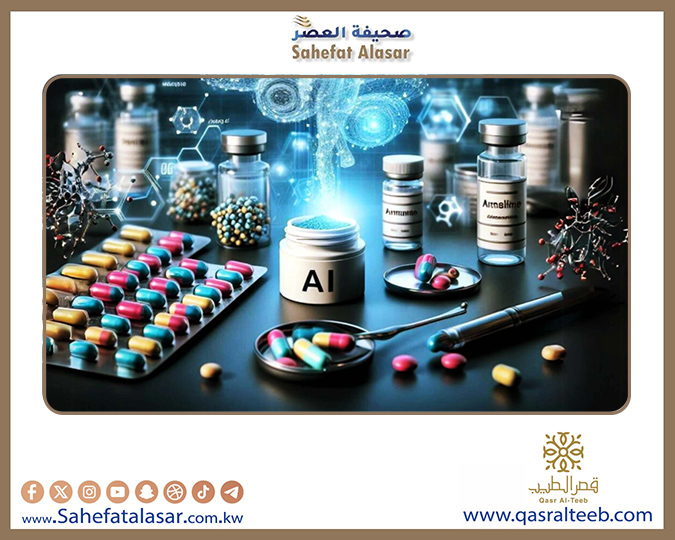


One day, you'll wake up in the morning without having to take any medication. You won't open the capsule box, you won't look for water, and you won't feel the chronic anxiety associated with a missed dose or new side effects.
Instead, treatment will have begun before you open your eyes. Somewhere inside your body, microorganisms (programmed and connected to an AI system) are monitoring your body from the inside. You sense subtle changes that you don't feel, analyze the data, and make a decision: now is the right time to produce a tiny amount of the therapeutic molecule. No need for permission, no prescription, no human intervention.
Sounds like a science fiction story? Perhaps, but the truth is that this future is closer than we think.
At a unique intersection between biology and artificial intelligence, scientists are developing a new type of drug: digital drugs, programmed to live inside the body, and produce the right drug, in the right place, at the right time. They are not just medical tools, but intelligent biological entities, capable of understanding, responding and adapting.
In this article, we dive into the depths of this revolutionary world together, to discover how the idea of digital medicine originated, and what role AI plays in designing and directing it within the body.
From an ambitious idea to cutting-edge research, the idea of the body making its own medicine has been in the imagination of scientists for decades, but what it lacked was the technology that gives bacteria the ability to think and make decisions. As genetic engineering evolved and synthetic biology techniques emerged, researchers began to imagine a bolder scenario: What if we programmed a beneficial bacteria into a small factory that lives inside the gut? Not just a parasitic or coexisting organism, but an intelligent unit that produces pharmaceutical compounds when needed.
That's where AI came in, taking this dream to an unprecedented level. It's no longer just static programming that bacteria do all the time, but they can be equipped with algorithms that are a bit like a primitive nervous system, sensing the body's environment, analyzing biodata, and deciding: Is it time to produce a drug? Or is the body okay and we have to wait?
In this way, the bacteria are transformed into microtherapeutic organisms, similar to silent doctors who do not sleep, live inside us, and make the right decision at the right moment.
The role of artificial intelligence to turn bacteria into a "smart therapeutic organism," scientists begin a process called genetic engineering, which is to modify the DNA of bacteria to add new functions that were not naturally present in them. In this case, artificial genes, i.e. parts of the genetic code, are inserted that are responsible for making certain compounds, such as enzymes that treat a specific disease. But it doesn't stop there, but there are also "switches" like parts known as regulators, which act as internal sensors.
This is where artificial intelligence, specifically machine learning models, comes into play, helping scientists select the right genes and design the most effective genetic arrangements. The genetic map of bacteria is very complex, and there are billions of possibilities when you modify it.
But AI can analyze huge databases from past experiments, predict how bacteria will respond to the environment inside the human body, and even simulate how they will react to different diseases or certain diets. It also helps improve the efficiency of genetic sensors, and fine-tune the level of drug production, so that it is not too much or too little.
In other words, AI is being used as a design, test, and prediction tool, which makes it possible to program bacteria that are very precise in their behavior, and behave inside the body as if they were an intelligent device that senses danger and intervenes at the right moment.
Realistic experiments that resemble fiction Although the idea may seem like science fiction at first glance, leading science labs around the world are actually starting to turn it into reality. At MIT, biologists and engineers helped found a company called Synlogic, one of the first to successfully develop genetically programmed beneficial bacteria capable of producing therapeutic compounds in the body.
In one of the most ambitious trials in the world of biomedicine, Synlogic has developed a type of genetically modified bacteria called SYNB1020, with the aim of treating a rare disorder known as urea cycle disorder, which leads to the accumulation of urinaryToxic ammonia in the blood due to a genetic defect that prevents the body from getting rid of excess nitrogen.
The idea was to use a safe strain of E. coli Nissle 1917, genetically modified to detect high levels of ammonia within the gut and immediately start converting it into a non-toxic amino acid called arginine, which the body can naturally eliminate.
